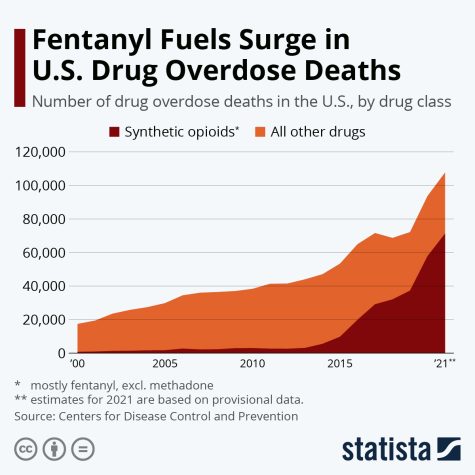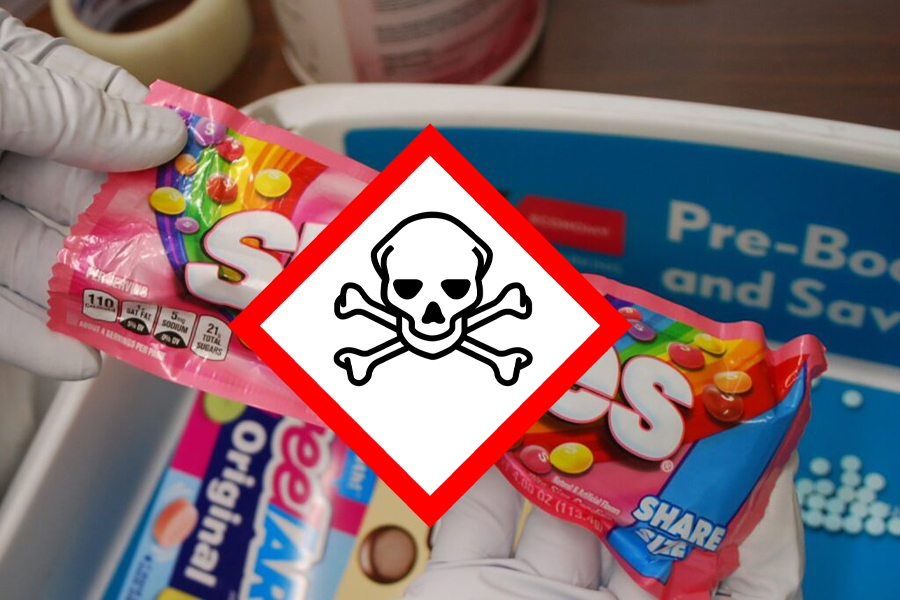The hard truth about opioid lacing
The deadly opioid fentanyl affects people of all ages as increasing numbers of consumables contain it.
The little pill that has higher death rates than gun violence, car accidents, and suicide is more prevalent now than ever and is taking the lives of people of all ages. Consumables such as drugs, candy, and electronic cigarettes can contain the deadly opioid fentanyl, which has caused thousands of overdoses all over the world, according to washingtonpost.com. Ms. Kathleen Tiedemann and Ms. Elisa Kristensen, Upper School Nurses, discussed the impact of these issues on the younger generation.
Fentanyl is a powerful prescription drug that treats patients in discomfort after surgical operations and people in chronic pain with tolerance to other opioids, according to nida.nih.gov. As more consumables become laced with this drug, overdoses due to this painkiller are rising across the country. These overdoses result in hypoxia, which is when the amount of oxygen that reaches the brain decreases, eventually leading to comas, permanent brain damage, and death, according to nida.nih.gov.

This issue is not new, as fentanyl has been involved in illicit drug deals since 1979. The death rate from the drug increased from 8,050 in 1999 to 33,091 in 2015, according to umassmed.edu. More recently, from May 2020 to April 2021, more than 100,000 Americans have died from a drug overdose, with 64 percent of these deaths due to fentanyl and similar opioids. United States authorities now seize more fentanyl in a single month than they did all through 2018, averaging 2,200 pounds, according to washingtonpost.com.
The new trend of the deadly opioid, “rainbow fentanyl,” describes pills and powders that are brightly colored to appear as candy, and even sidewalk chalk to reach the target audience of young adults and children, according to dea.gov. Without testing, there is no way of knowing how much fentanyl is in these consumables. Any amount of fentanyl is a lethal dose. The first case of “rainbow fentanyl” appeared in February 2022 and the United States Drug Enforcement Administration (DEA) has seized it in 21 states as of September 2022, according to justice.gov. Ms. Tiedemann reflected on the dangers that any amount of fentanyl can cause.

“The problem is the younger generation does not realize how bad this fentanyl issue is. You go on the internet and see all these things and it is laced in anything,” Ms. Tiedemann said. “Any little pill can have fentanyl in it and any amount of fentanyl is deadly, there is no way of knowing.”
In order to educate the American population about the dangerous effects of the drug, the DEA started the “One Pill Can Kill” campaign. This campaign shows the differences between some fake and legitimate pills on the market through photos and emphasizes only trusting medications that a medical professional prescribes, according to dea.gov. Ms. Kristensen spoke about why she believes the younger population is a target audience and how young adults and children can stay safe.
“I think the younger population can stay safe by having information and knowing what fentanyl does and how it affects the body, how it affects you, what it does to your respiratory system, you know it is not like every other drug out there,” Ms. Kristensen said. “I think they are a target because they do not understand and realize it is a separate component from all these other drugs, they believe it is the same. I think that if they knew that and what it does it would stop them from being a target.”
Featured Image by Kelly Haggerty ’23

Kelly is ecstatic for her third and final year on the paper, returning as a Content Editor. In her fourth year at Sacred Heart she is looking forward to...


